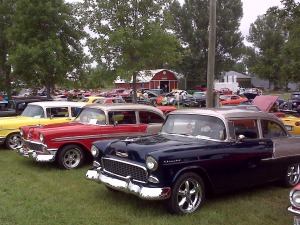Classic Cars: The Iconic 1966 Chevrolet Corvette
Classic Cars: The Iconic 1966 Chevrolet Corvette
The Chevrolet Corvette has been called “one of the greatest lines of sports cars ever built” by many classic car enthusiasts, with a history covering more than 40 years. Interestingly enough, the ’66 model almost never existed; early versions of the Corvette were often called “too American” to appeal to American sports car buyers! It was in 1955 that the model was improved and started gaining popularity, later turning into one of the most iconic cars of the 1960’s.
Not only was the 1966 Chevrolet Corvette known for its style and class, it often makes cameos in movies, and has even been featured in Country songs. 1966 Corvettes, which were produced from September 1965 through July 1966, featured a newly introduced 427 cubic-inch engine. This high performance engine was actually originally listed and labeled at 450 hp but the rating was reduced to 425 hp shortly after introduction.
Other than the engine, the 1966 Corvette had many features that made it different from the previous year’s model. For example, the ’66 Corvette sported a plated, cast-metal grille with an “egg crate” insert not seen in previous models, in addition to ribbed rocker panel moldings, chrome-plated exhaust bezels, and spoke-style wheel covers.
These weren’t the only features that set the 1966 Corvette apart from other vehicles. This model had eliminated roof vents, replacing them with front fender sides that featured three slanting vertical air louvers. These Corvettes were available in a wide range of colors, with 10 lacquer exterior finishes, ranging from tuxedo black or ermine white to sunfire yellow and miland maroon. Interior colors varied too, with bright blue or red being popular choices.
Whether your classic or specialty car is a Chevrolet Corvette or not, Condon Skelly has the Insurance Policies to keep you financially protected. We’ve been helping our customers protect their classics with affordable, industry-leading classic, antique, and specialty vehicle insurance since 1967. We’re a group of collectors, enthusiasts, and professionals who specialize in insuring all types of collector vehicles. For more information, please contact us today at (866) 291-5694.







